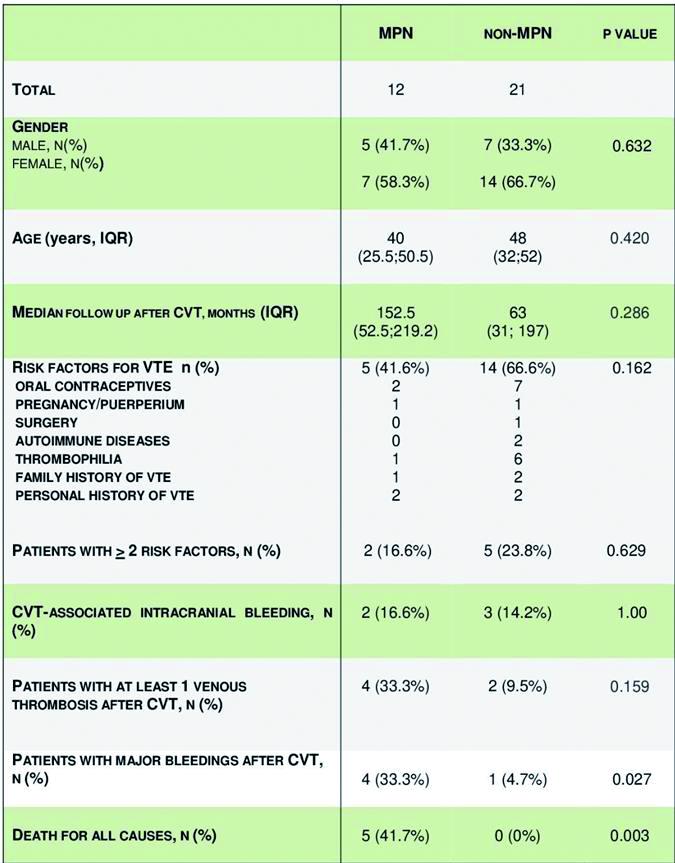29th National Conference of the Italian Society for the Study of Hemostasis and Thrombosis, 2025
Vol. 4 No. s1 (2025)
PO35 | Cerebral veins thrombosis in patients with and without myeloproliferative neoplasm: a real life retrospective monocentric study
I. Bertozzi, M.T. Sartori, M. Zerbinati, G. Libralon, A. Galbiati, P. Simioni | First Medical Clinic, Department of Medicine - DIMED, Università degli Studi di Padova, Italy
Publisher's note
All claims expressed in this article are solely those of the authors and do not necessarily represent those of their affiliated organizations, or those of the publisher, the editors and the reviewers. Any product that may be evaluated in this article or claim that may be made by its manufacturer is not guaranteed or endorsed by the publisher.
All claims expressed in this article are solely those of the authors and do not necessarily represent those of their affiliated organizations, or those of the publisher, the editors and the reviewers. Any product that may be evaluated in this article or claim that may be made by its manufacturer is not guaranteed or endorsed by the publisher.
Published: 22 October 2025
33
Views
0
Downloads
Similar Articles
- PO89 | Apixaban for secondary prevention of venous thromboembolism in hemodialysis patients: pharmacokinetic profile and safety outcomes , Bleeding, Thrombosis and Vascular Biology: Vol. 4 No. s1 (2025)
- PO28 | Long term effectiveness and safety of venous thromboembolism with fondaparinux: data from the start registry , Bleeding, Thrombosis and Vascular Biology: Vol. 4 No. s1 (2025)
- PO57 | Direct oral anticoagulant determination in urine samples compared to plasma concentrations in outpatients with atrial fibrillation and obesity , Bleeding, Thrombosis and Vascular Biology: Vol. 4 No. s1 (2025)
- PO91 | Disseminated intravascular coagulation with deep vein thrombosis in a frail patient: an extreme manifestation triggered by sepsis during SGLT2i therapy , Bleeding, Thrombosis and Vascular Biology: Vol. 4 No. s1 (2025)
- PO29 | Quality of anticoagulation as a predictor of early left ventricular thrombosis resolution: a retrospective cohort study , Bleeding, Thrombosis and Vascular Biology: Vol. 4 No. s1 (2025)
- PO58 | Gender differences in primary haemostasis , Bleeding, Thrombosis and Vascular Biology: Vol. 4 No. s1 (2025)
- PO92 | Challenging management of portal vein thrombosis in a cirrhotic patient on hormone therapy after breast cancer , Bleeding, Thrombosis and Vascular Biology: Vol. 4 No. s1 (2025)
- PO30 | Acquired angioedema associated with B-non Hodgkin lymphoma: a case report , Bleeding, Thrombosis and Vascular Biology: Vol. 4 No. s1 (2025)
- PO59 | Efficacy and safety of different anticoagulant treatment regimens for isolated internal jugular vein thrombosis: a case series , Bleeding, Thrombosis and Vascular Biology: Vol. 4 No. s1 (2025)
- PO93 | Use of DOACS in heart transplantation recipients , Bleeding, Thrombosis and Vascular Biology: Vol. 4 No. s1 (2025)
1-10 of 95
Next
You may also start an advanced similarity search for this article.









